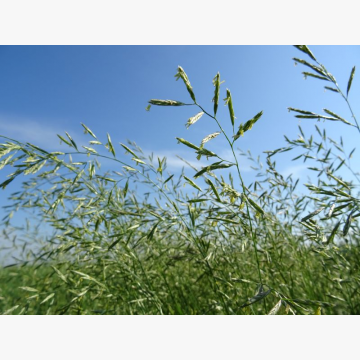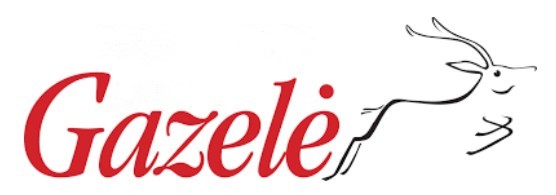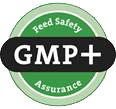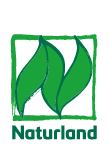- Home
- Seeds
- Fodder grasses and legumes
- FORAGE GRASSES
- Meadow fescue COSMONAUT
FOR CONSULTATIONS APPLY TO:
Commercial director
Lina Smalskienė
tel. +370 618 02 551
e-mail linak@agrolitpa.lt
Sales manager
Tautvydas Kliučininkas
tel. +370 681 35 093
e-mail tautvydask@agrolitpa.lt
Sales manager
Eglė Petkevičienė
tel. +370 626 95 458
e-mail eglep@agrolitpa.lt
Sales manager
Kotryna Nakrošytė
tel.: +370 601 39 282
e-mail kotryna@agrolitpa.lt
Meadow fescue COSMONAUT
A mid-early, high-yielding, winter-hardy and crown rust-resistant diploid meadow fescue
- Pronounced dry matter yields, especially in regrowth
- Excellent winter hardiness
- Persistent
- Low susceptibility to rust
- Reliable for use in various climatic zones In Central and Western Europe
- High protein content
- Recommended for medium early mixtures with other grasses or legumes for long-term pastures and meadows
- Earliness – medium early (4 points)
- Excellent yields, especially – of aftermath
- Yield of first year – 5.57 t/ha
- Yield of second year – 3.69 t/ha
- Yield of third year – 6.12 t/ha
- 3-year (2015-2017) average yield – 5.13 t/ha
- Total dry matter yield – medium (5 points out of 9)
- Dry matter yield of the 1st harvest – medium (5 points out of 9)
- Dry matter yield of subsequent harvests – medium/high (6 points out of 9)
- Initial growth – moderate (6 points out of 9)
- Plant height – 105 cm
- Plant height – 6 points (out of 9)
- Winters well
- Winter hardiness – good
- Sensitivity to cold – low/moderate (4 points out of 9)
- Drought tolerance – good
- Persistent
- Persistency – medium/high (6 points out of 9)
- Resistance to lodging – good
- Tendency to lodging – medium (5 points out of 9)
- Resistance to diseases – good
- Excellent resistance to crown rust
- Susceptibility to rust – low (3 points out of 9)
- Turf density – medium (5 points out of 9)
- Heading time – early/medium (4 points out of 9)
- Flowering time (in Germany) – May 21.
- Length of inflorescences – medium (5 points out of 9)
- Seed yield – 1000 kg/ha
- Seed yield potential – 1250 kg/ha
- 1000 seed weight – 2.3 g
- Green protein content – 14.6 %
- NDF – 49 %
- Tolerates grazing
- Suitable for various climate zones in Central and Western Europe
- Suitable for long-term pastures
- Suitable for mixtures with timothy, white or red clover, alfalfa
- Tolerates wetter soils, even short-term flooding
- Initial mass formation – moderately strong (6 points)
- Tendency to die in winter – moderately low (4 points)
- Tendency to lodging – medium (5 points)
- Susceptibility to rust – low (3 points)
- Persistence – moderately high (6 points)
- Turf density – medium (5 points)
- Total dry matter yield – medium (5 points)
- Dry matter yield of the 1st cut – medium (5 points)
- Dry matter yield of subsequent cuts – moderately high (6 points)
*Rating scale: 1 – very little, very early / 9 – very strong, very high, very late
*Source: According to the specifying variety list 2016 issued by the Bundessortenamt
- Heading time – 4 points
- Heading time (in Germany) – 45 days after April 1st
- Growth height at initial development – 5 points
- Growth habit at initial development – 5 points
- Growth height / fully developed – 5 points
- Growth habits / fully developed – 3 points
Stem length – 5 points
*According to Beschreibende Sortenliste. Futtergräse Ersparsette, Klee, Luzerne, 2020, Bundessortenamt, data
- Date of the 1st harvest – May 19
- 2017 yield – 6.12 t/ha
- 2016 yield – 3.69 t/ha
- 2015 yield – 5.57 t/ha
- 2015-2017 average yield – 5.13 t/ha
- Crop status 10/15/2017 – 93 %
- Green protein content – 14.6 %
- NDF digestibility (30-Hour NDFD) – 49
* According to research in Pennsylvania, 2015-2017. Source: Boone W, Harkcom WS, Hall MH. 2017 FORAGE TRIALS REPORT, p. 20.
- Yield – 5.3
- General appearance – 3.7
- Early growth – 3.3
- Competitiveness – 4.7
- Persistence – 3.5
- Tolerance / resistance to winter conditions – 5.2
- Tolerance / resistance to leaf diseases – 2.9
- Digestibility of organic matter – 5.0
- Adaptation to altitude – 4.1
- Indicator – 4.27
* Rating scale: 1 – very high, very good; 9 – very weak, very bad
*2008-2010 according to research in Switzerland. Source: Suter D., Frick R., Hirschi1 H.-U. Tests de nouvelles et d'anciennes variétés de fétuque des prés | Production végétale. Recherche Agronomique Suisse 2(6): 258–263, 2011
The varietal parameters may differ from those indicated here when the testing circumstances differ from quondam
Keravos sreet. 17, Kerava,
LT-38 131 Panevėžys district, LITHUANIA
Enterprise's code 168598128
VAT code LT685981219
Tel. +370 615 11 315
E. mail info@agrolitpa.lt




.JPG)


